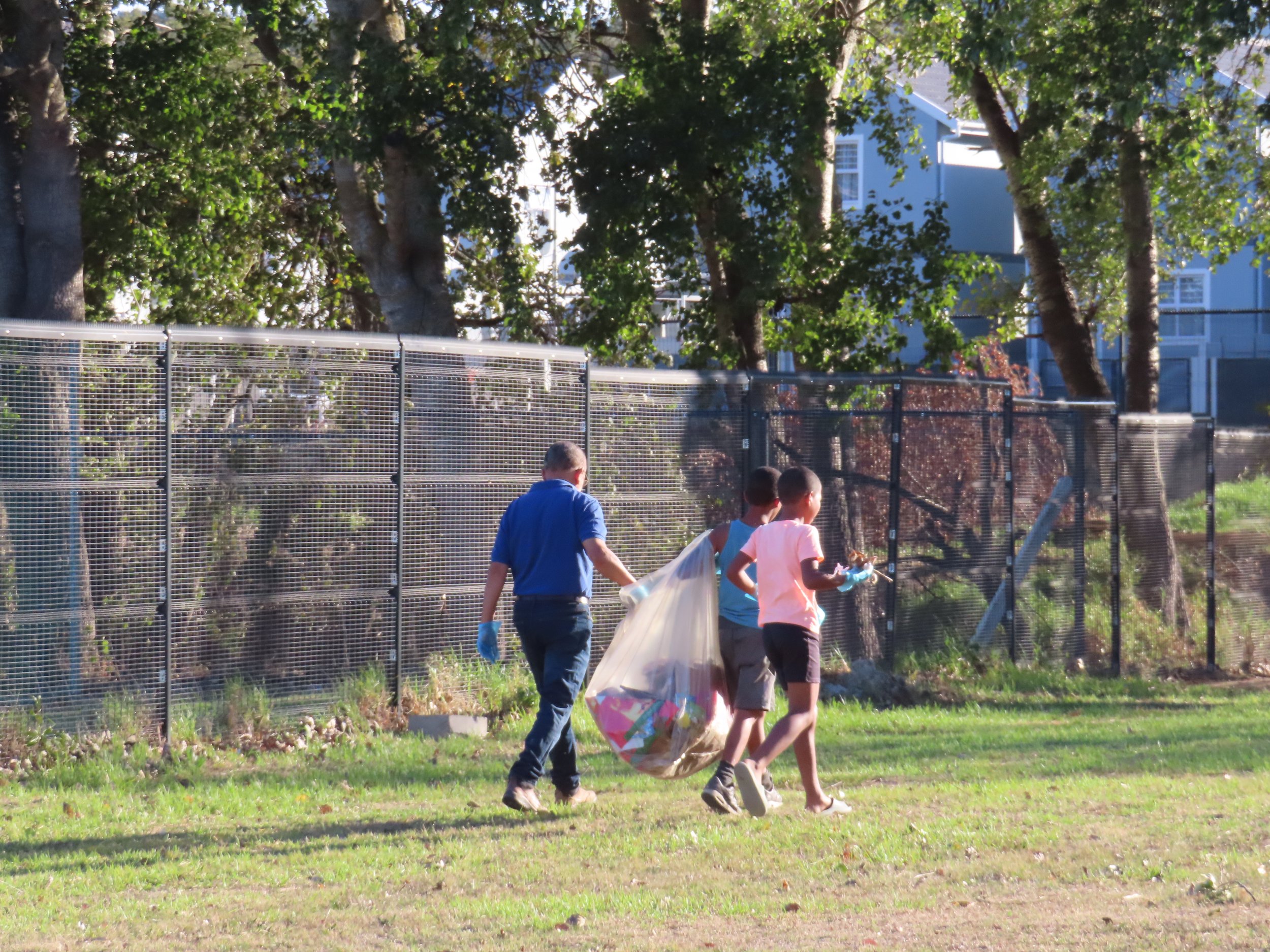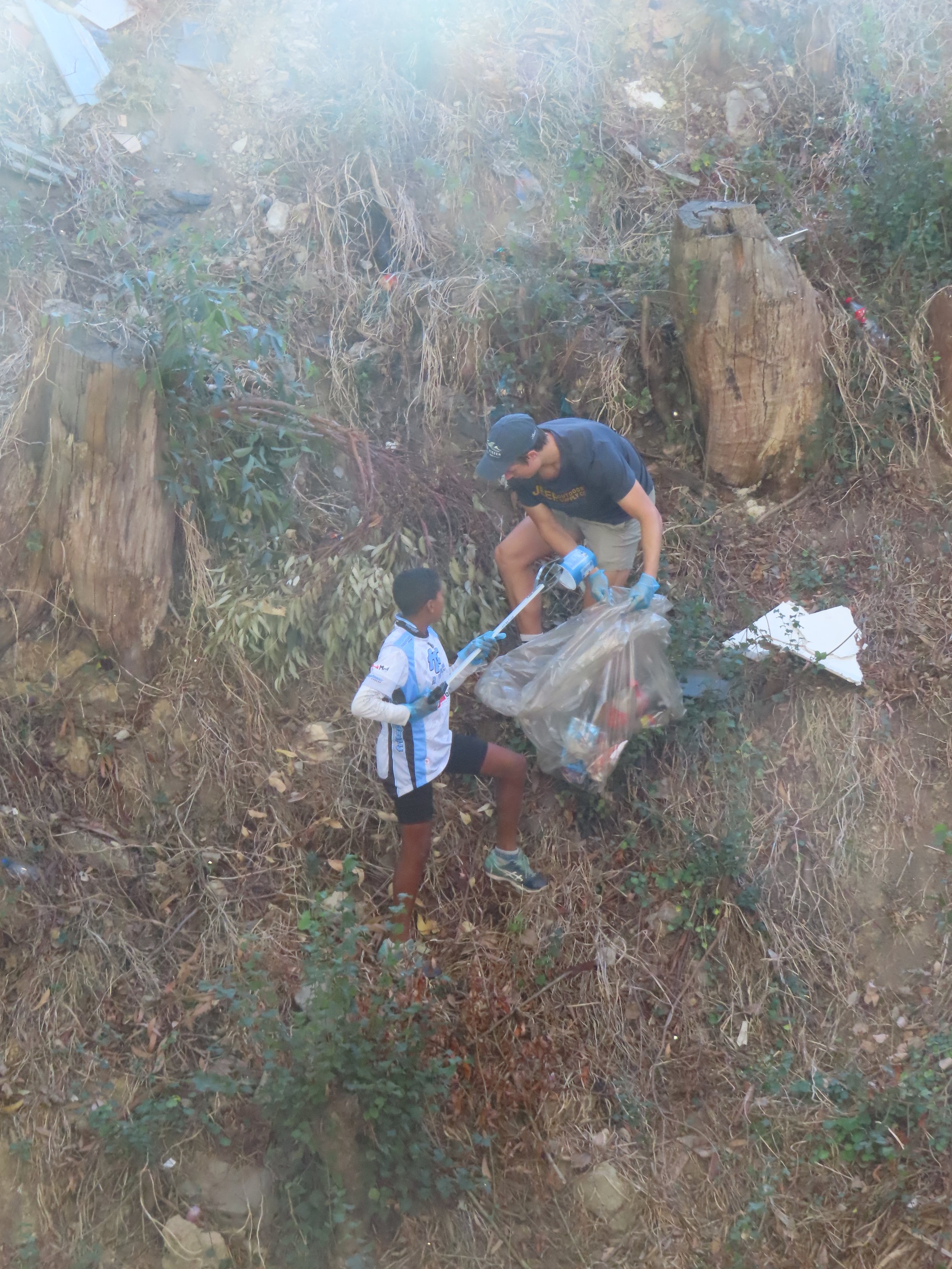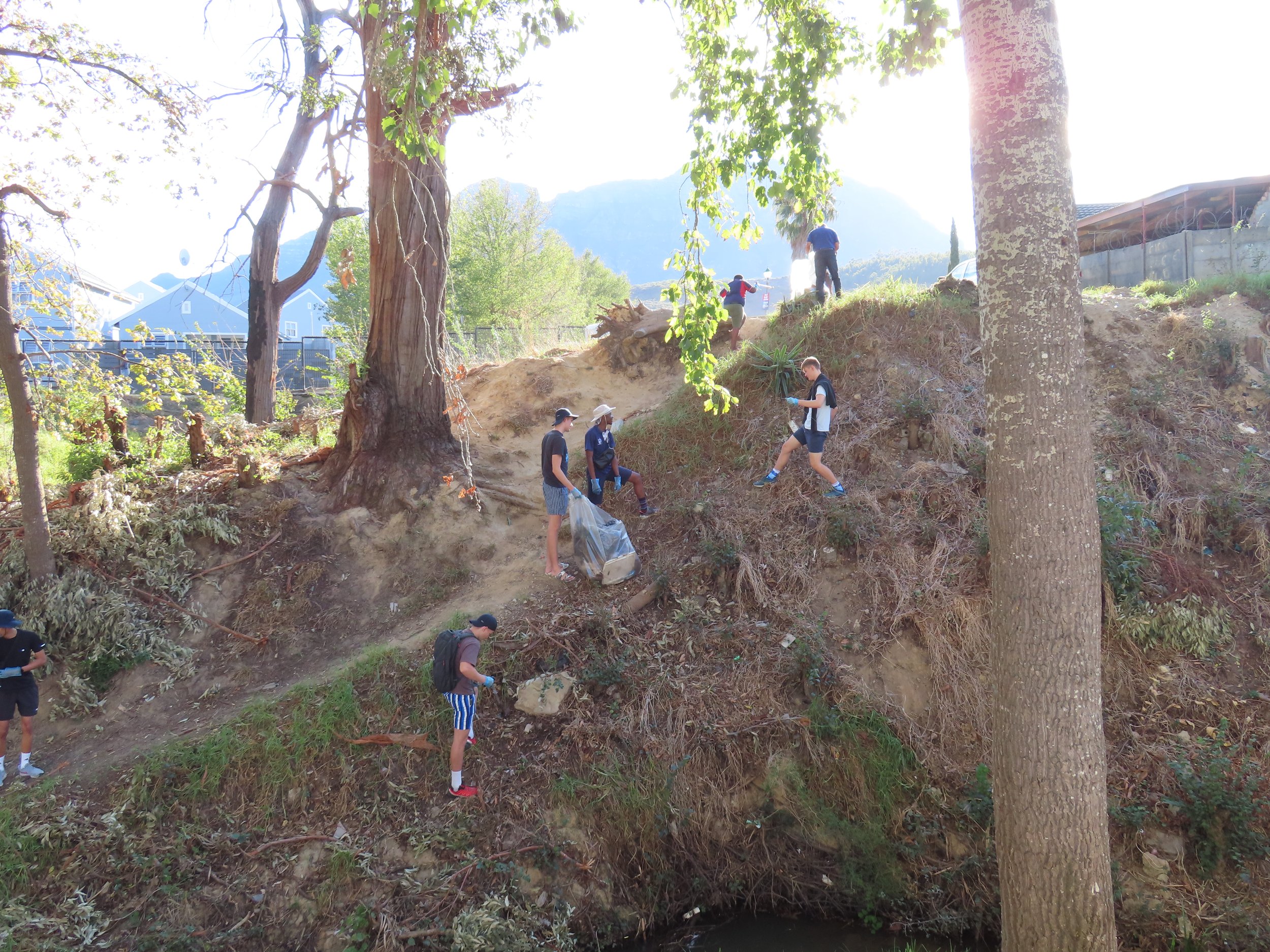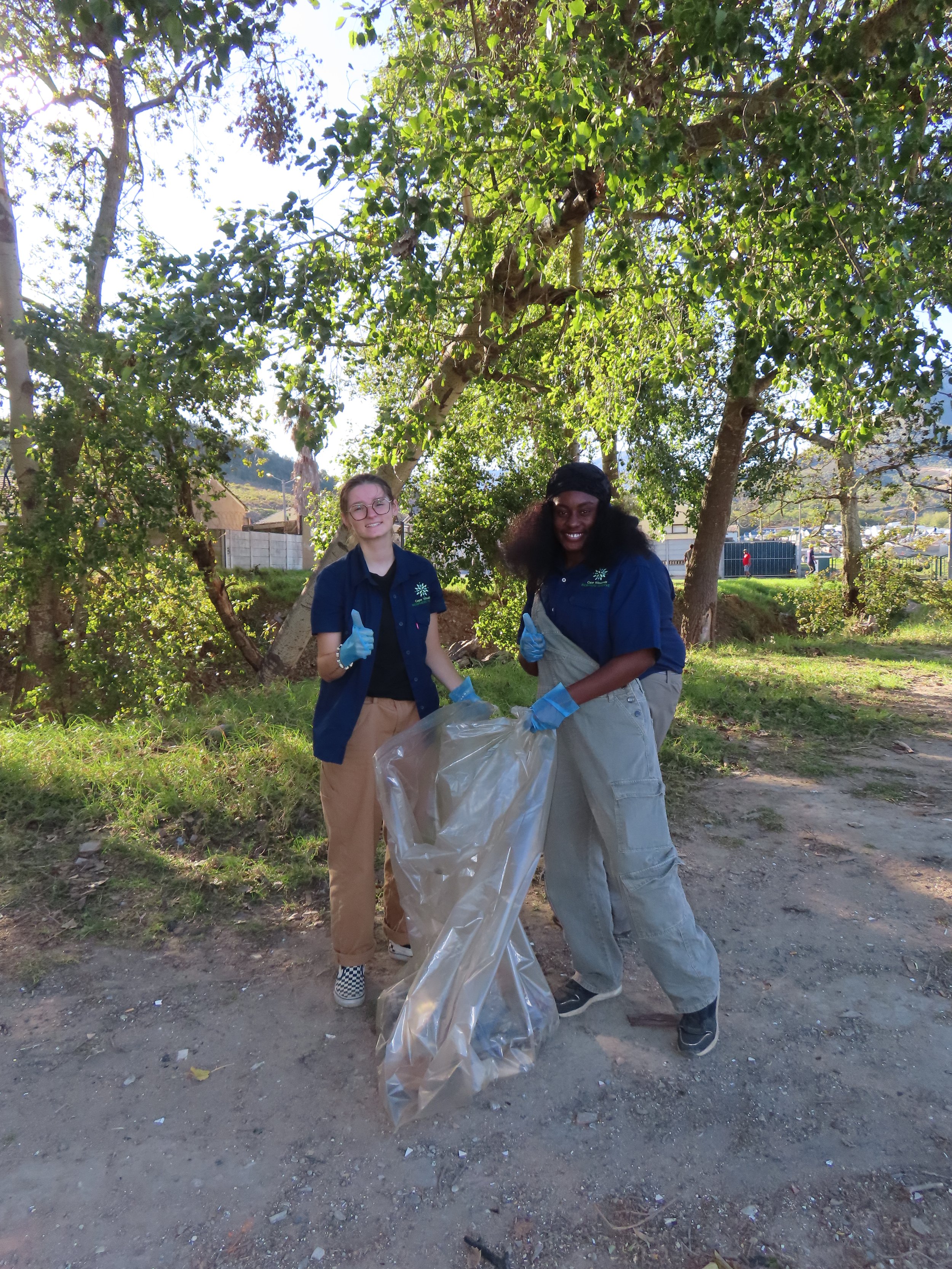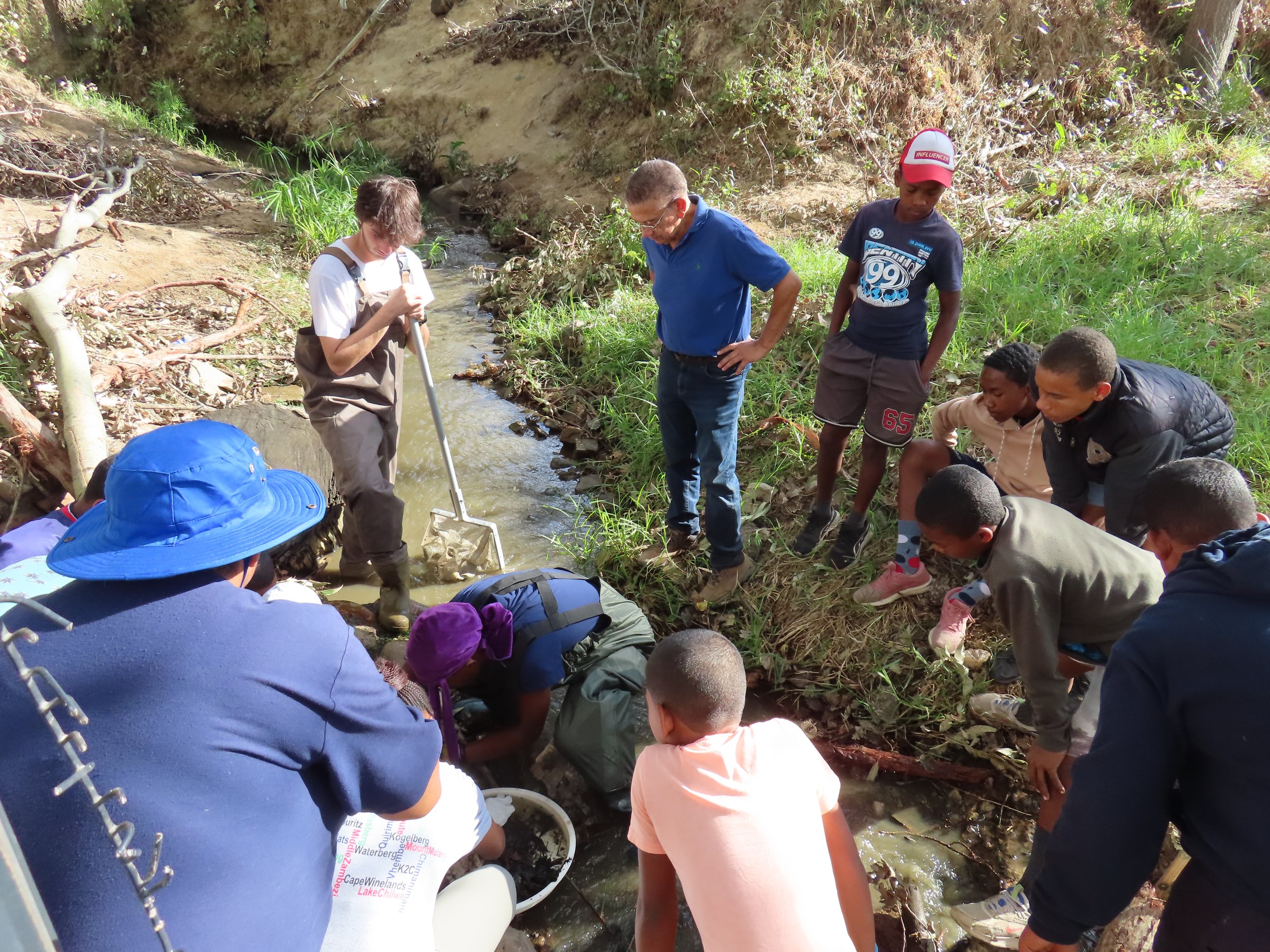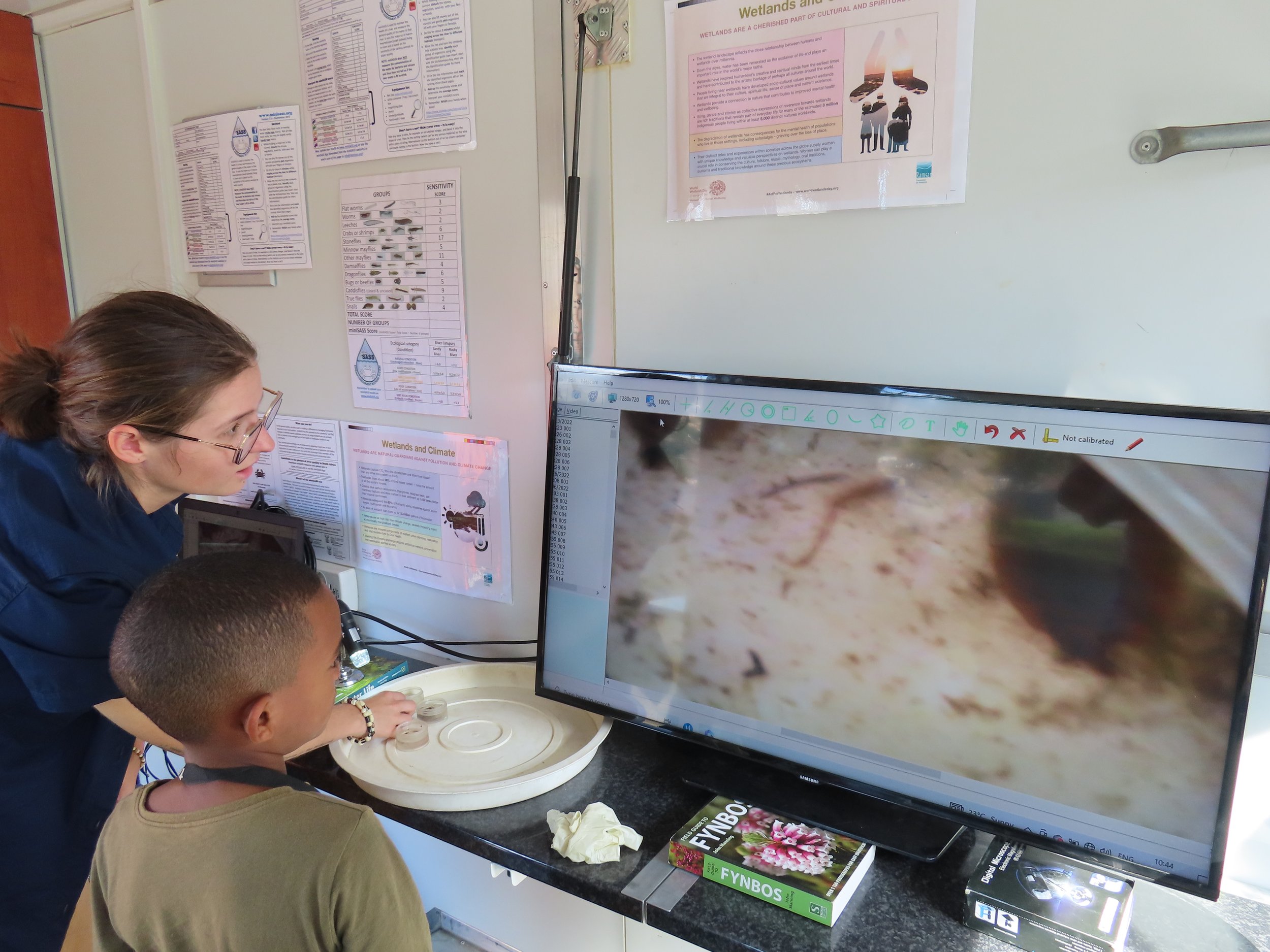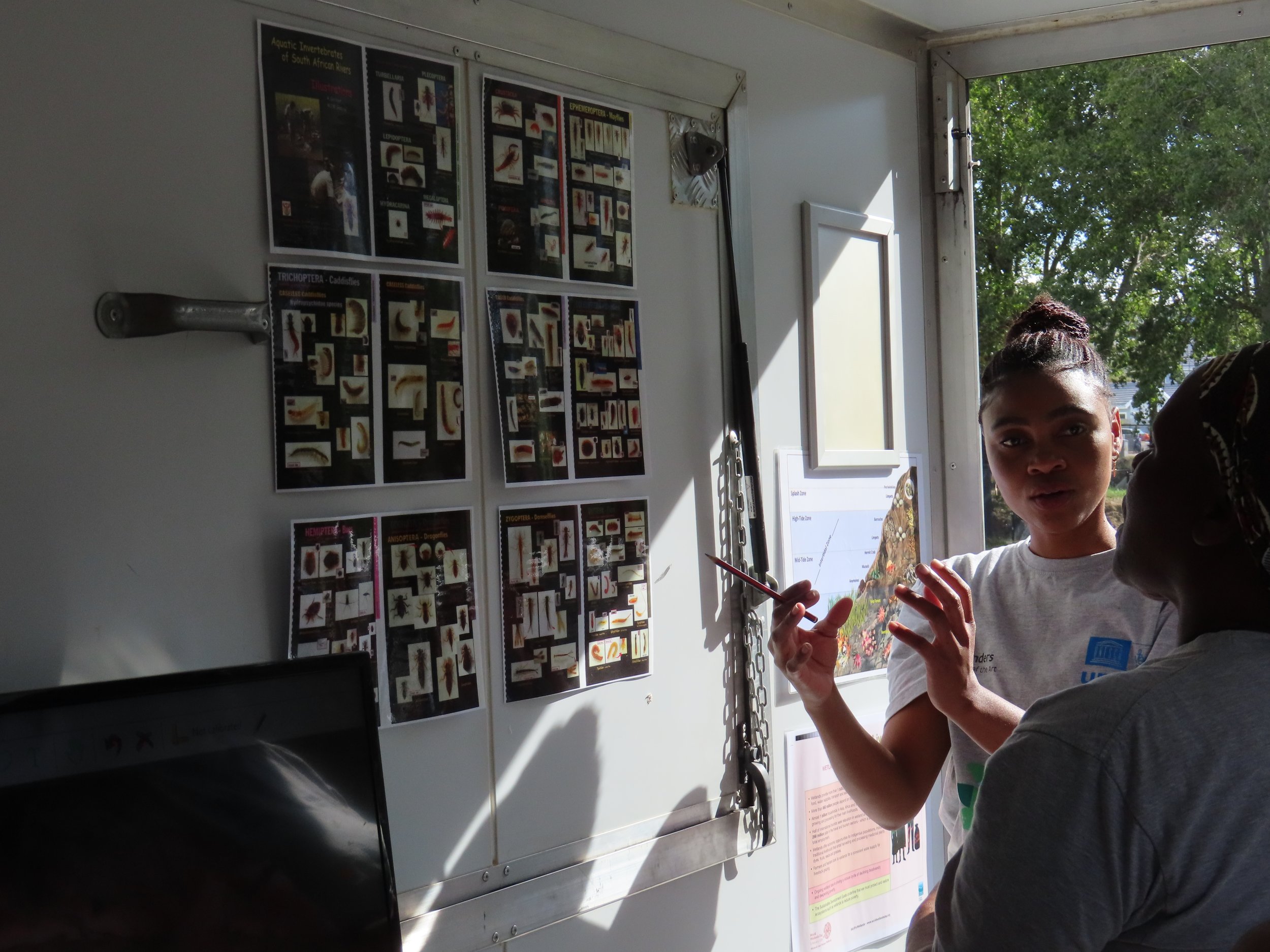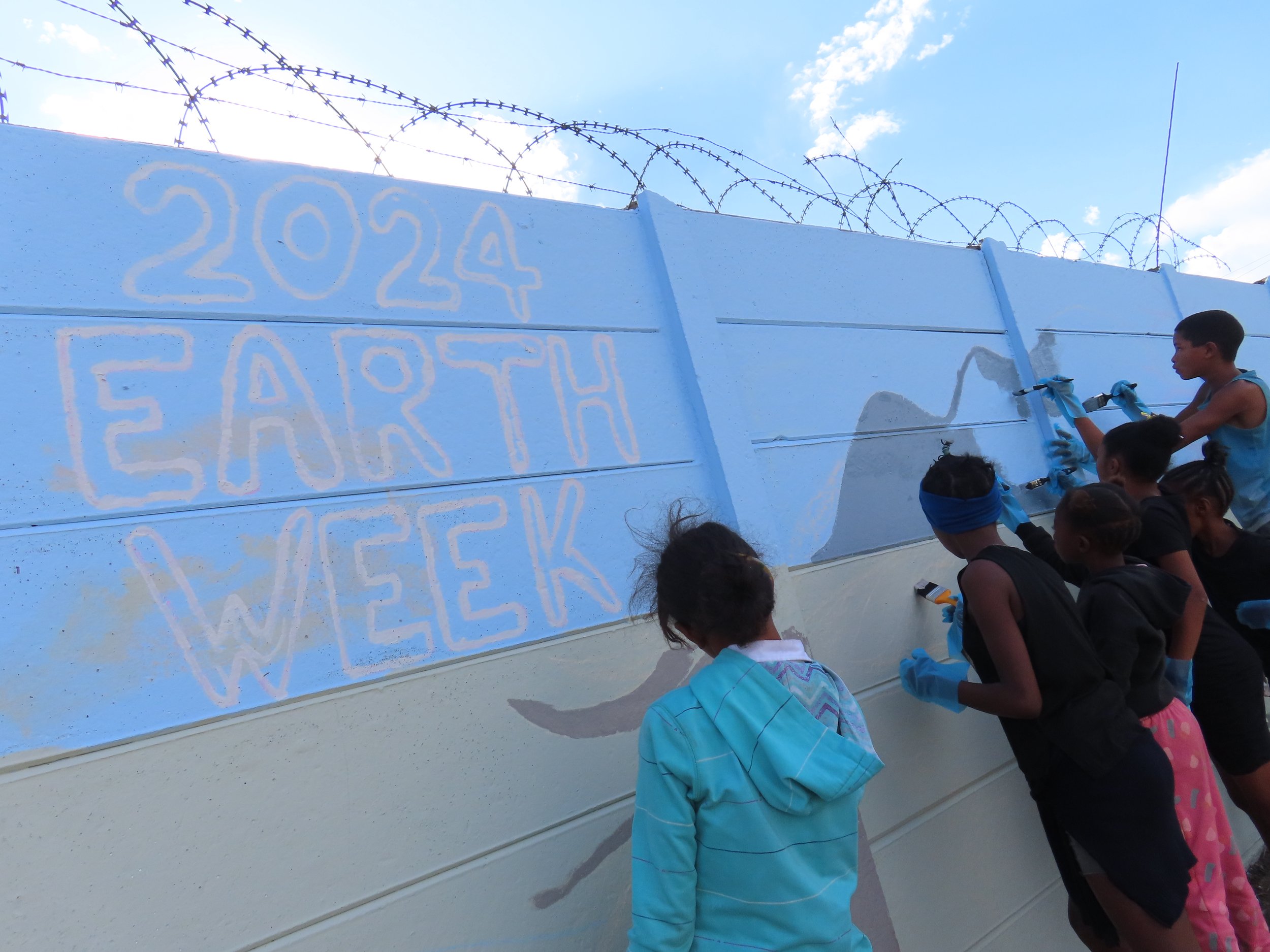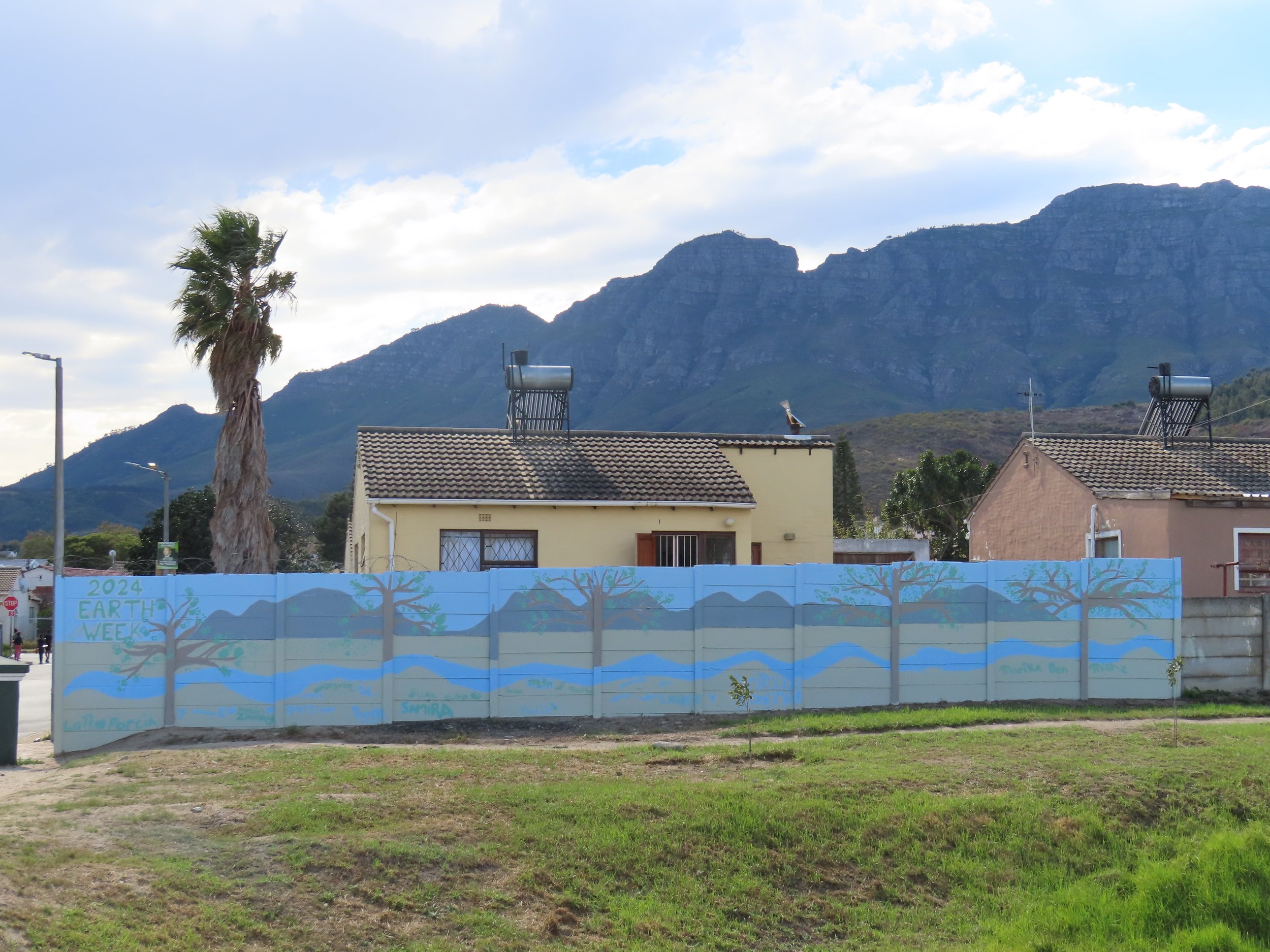Earth Day 2024
The 22nd of April is declared as International Earth Day, a dedicated day to come together as communities and individuals to learn about and celebrate the biodiversity on our beautiful planet Earth through educational activities that foster healthier habits and promoting environmental conservation and sustainable living.
As part of the UNESCO Man and Biosphere Programme, Cape Winelands Biosphere Reserve (CWBR), is a custodian for all of the above, every day, all year around.
For this year’s dedicated international celebration with the broader community, we partnered with Idas Valley Trails, Stellenbosch University, EcoMaties Society, and CapeNature to facilitate activities in Idas Valley with youth and members of their community.
With this year’s theme in mind – Planet vs. Plastics: the morning started with a clean-up of the area where the activities would be hosted. Seven bags, equivilant of 240 litres of trash, were filled from what was collected in the park, along the park’s fence line, and the river. Pinpointing why littering is bad and the importance of a clean environment, so that it can be enjoyed by everyone, and for biodiversity to thrive. Once this was done, the enthusiastic youth were excited to proceed to the rest of the day’s activities.
Cape Winelands Biosphere Reserve activities included our trusted mobile educational classroom STEAM-Y* hosting digital microscopes, binoculars, telescopes, books on animals and the environment, and human anatomy models.
Two CWBR trained community citizen scientists, together with two CWBR international volunteers, led the anticipating youth to the Krom River to discover the biodiversity that lives within it. The MiniSASS method was explained and how it is used to monitor river health. The turbidity tube was also explained, how it determines how clear or murky the river is. With the initial findings indicating quite poor river health, the youth were happy to discover a crab and various nymph’s (a form taken at a stage in a dragonfly’s life). These were later taken to the mobile classroom, to be observed closer under a digital microscope and identified.
At the mobile classroom, facilitated by two CWBR international volunteers, the youth learned to use binoculars and a telescope. Further along the park, on the other side of the road, Stellenbosch University students and two facilitators, including three representatives from EcoMaties Society, planted trees along the riverbed and, together with several youth, painted a mural in commemoration of the day’s activities.
70 participants altogether joined in on the day’s activities.
*Science, technology, engineering, art, and mathematics – for youth

